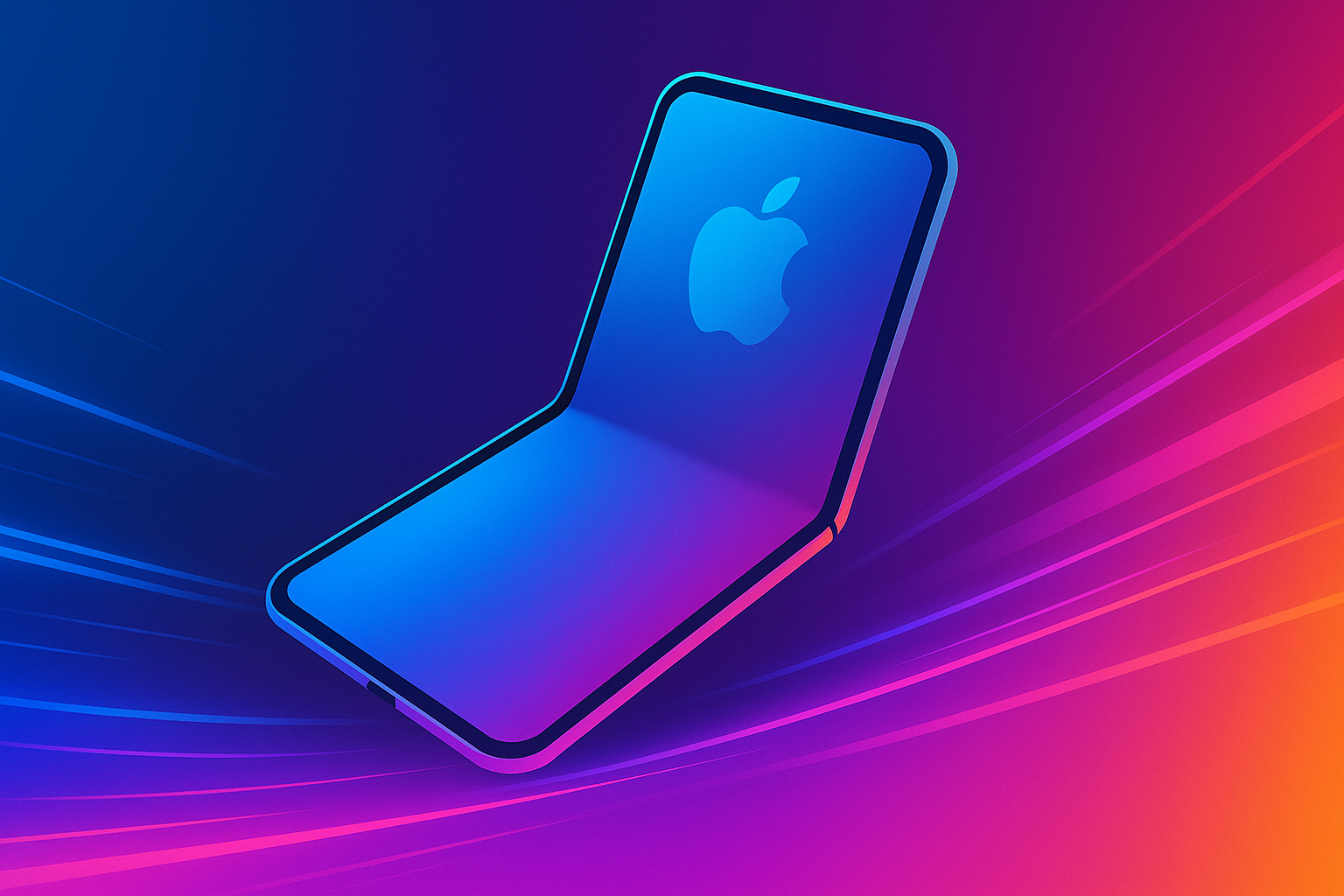Could Apple Finally Unfold the iPhone?
Could the next iPhone slip effortlessly into your pocket and expand into a tablet at a tap? Rumours of a folding iPhone have circled for years, yet no prototype has emerged publicly. In 2024, the foldable smartphone segment shipped just 25 million units, roughly 2 percent of total smartphone volumes. Despite double-digit growth, creasing and hinge reliability remain obstacles. As Apple insiders hint at a foldable iPhone debut in 2026, gadget professionals must consider why this matters now.
Folding Market: Growth vs Reality
The worldwide foldable smartphone market reached 25 million shipments in 2024, up 37.6 percent from 18.1 million in 2023. Still, foldables accounted for under 2 percent of the 1.24 billion smartphones shipped globally last year. IDC forecasts a five-year CAGR (Compound Annual Growth Rate) of 15.9 percent for foldables through 2028, but base volumes remain modest. These numbers show that the folding screen segment is far from mainstream.
Early adopters drove a 57 percent YOY jump in foldable units in Q2 2024, yet high prices kept buyers few. Samsung dominates roughly 80 percent of this niche, with Huawei and Oppo trailing. Premium tags near US $2,200 deter many consumers from switching. As a result, the folding iPhone must overcome pricing hurdles to gain traction.
Compared to foldables, conventional slabs still dominate with high refresh rates and advanced cameras. Major brands such as Xiaomi and Huawei experimented with tri-fold designs, yet withdrew due to production complexity. Apple may leverage its App Store and developer relations to ensure apps scale across foldable screen sizes. Its integrated chipset design could optimise power management for larger displays. However, entering late may pressure Apple to justify premium pricing quickly.
In summary, the foldable screen category shows promise yet remains unproven. App developers must optimise interfaces for the flex display. Battery life under strain and software bugs could undermine user experiences. Until Apple addresses these challenges, the market's future looks uncertain.
The Crease Conundrum
For years, manufacturers have grappled with a visible fold line on UTG (Ultra-Thin Glass) screens, affecting user perception and device longevity. The crease appears where the display folds and can scatter light under certain angles. Apple's upcoming folding iPhone is said to use a novel Samsung-made panel promising a "nearly invisible" crease. If Apple nails this, it could set a new industry standard.
Hinge quality also shapes durability. Existing foldables often use metal alloys or pin-and-rack hinge systems that wear over time. Rumours suggest Apple may employ a liquid-metal hinge to reduce weight and friction. Such an approach could enhance longevity beyond current foldable devices. Yet it remains to be tested under real-world stress.
Foldable display panels often use plastic OLED (POLED) or hybrid film, which can degrade over time. Apple's trial units supposedly test multiple protective films to prevent delamination under stress. The MacRumors source claims Apple is exploring a unique Samsung panel type not yet used in consumer foldables. This display tech could combine flexible OLED with a micro-film substrate to minimise shear stress at the crease. If successful, it may resolve long-standing durability and visual artefact issues.
Apple's Rumour Mill or Genuine Breakthrough?
Recent reports suggest Apple plans a book-style folding iPhone alongside the iPhone 18 Pro and Air models in late 2026. Insiders say the device will feature a 5.7-inch outer screen and an almost 8-inch interior panel when unfolded. Leaks via Tom's Guide claim Samsung will supply the advanced foldable screen for this model. While Apple's ambitious foldable iPhone (codename "V68") is reportedly in active supplier engagements and prototype development phases, there's no public confirmation it has entered formal production testing.
Bloomberg's Mark Gurman reports two key advantages: a minimal crease and a high-quality hinge, which he links to new proprietary materials. Apple's tight vertical integration could help ensure both screen and hinge perform seamlessly. Critics argue these claims mirror past rumours that never materialised. Yet if true, Apple's entry could revitalise the foldable screen market with its brand strength. For now, the industry watches closely.
Apple's history with delayed or cancelled products, notably the AirPower charging mat, tempers excitement. Apple cancelled AirPower in March 2019 after concluding it did not meet quality standards. Such decisions reflect Apple's emphasis on reliability over novelty. This caution suggests the firm will not rush any folding iPhone release. Consequently, even genuine breakthroughs might not surface until 2027 if prototypes fail to satisfy benchmarks.
Real-World Implications
Foldable devices promise to blend smartphone mobility with tablet-like productivity. Imagine reading an email on one half while referencing a spreadsheet on the other. Such scenarios illustrate how a folding iPhone could change daily workflows for professionals.
Potential benefits include:
Enhanced multitasking with true split-screen functionality.
Expanded canvas for design, media and presentations.
Pocketable form factor when folded, improving portability.
Conclusion
The prospect of an Apple foldable smartphone matters because it could redefine how we use daily tech, blending phone and tablet into one device. While the foldable screen market shows growth, it remains unproven and niche. Apple's engineering prowess may address crease, hinge and software hurdles to drive broader adoption. As rumours intensify, professionals must weigh whether this device will offer genuine benefits or remain a premium novelty. Will you reserve judgement or embrace the foldable future?

